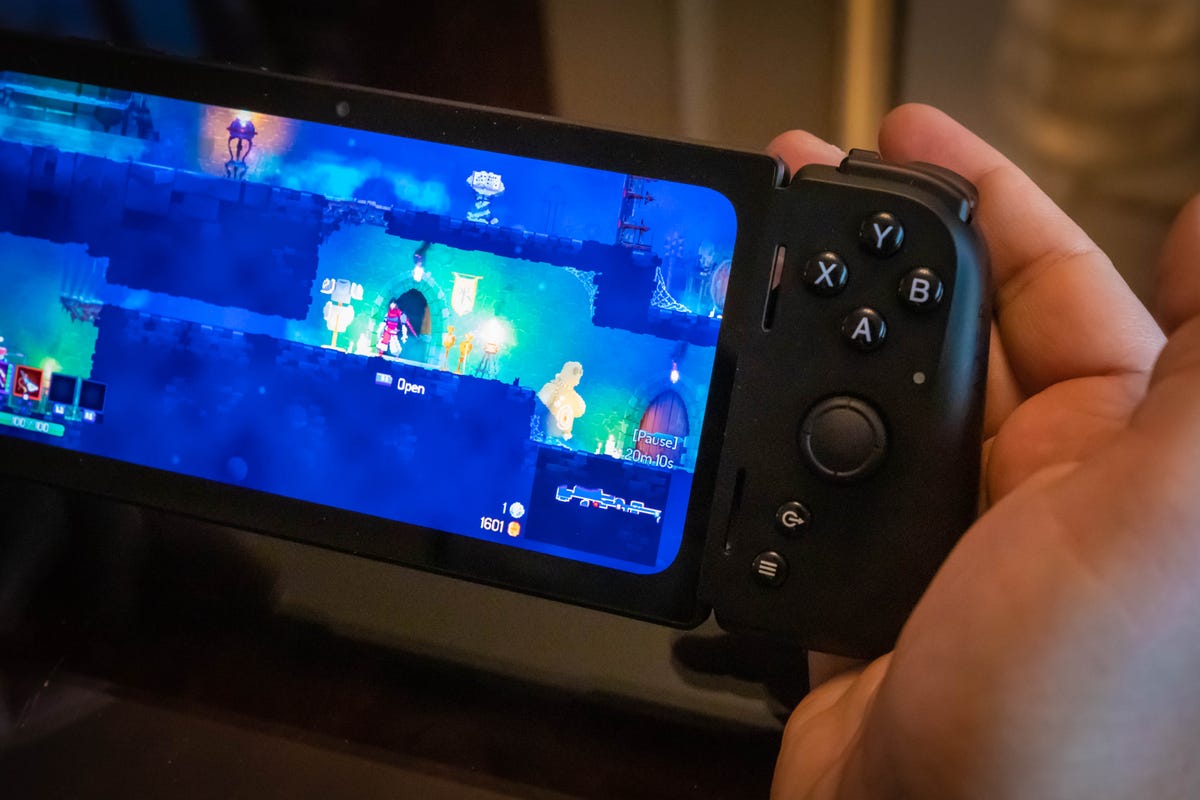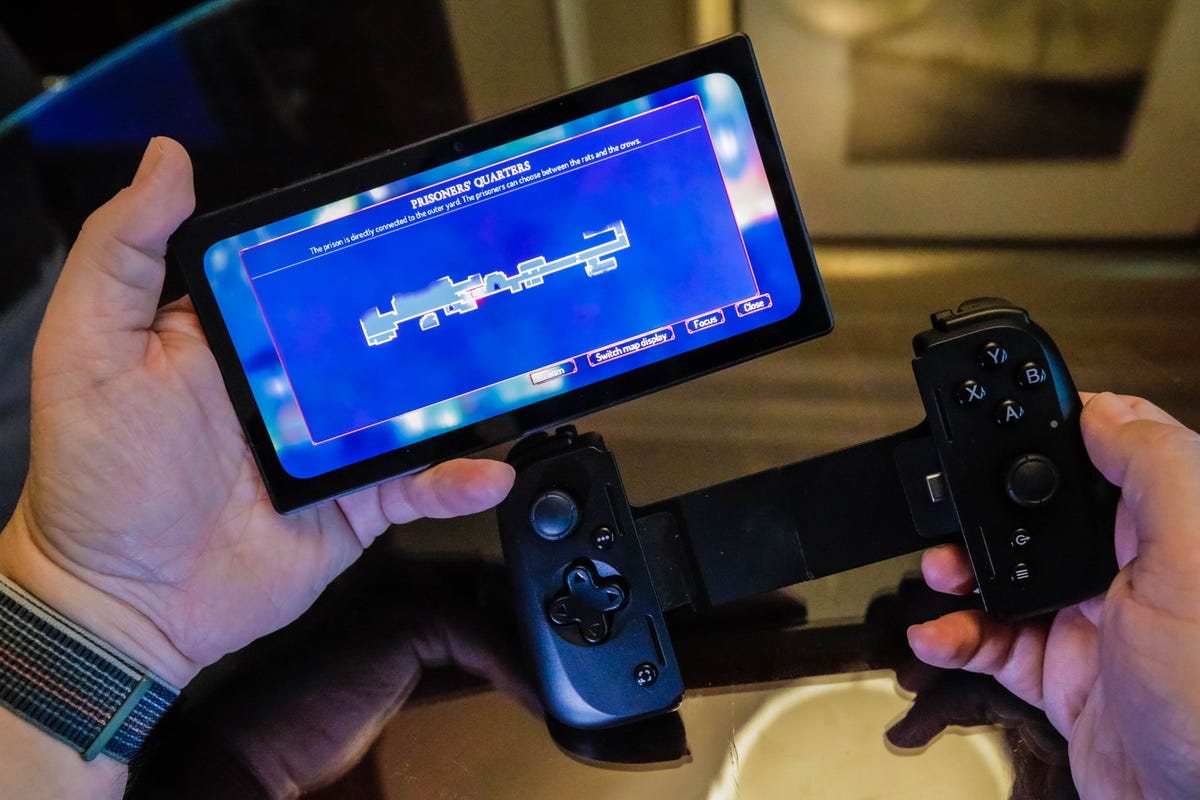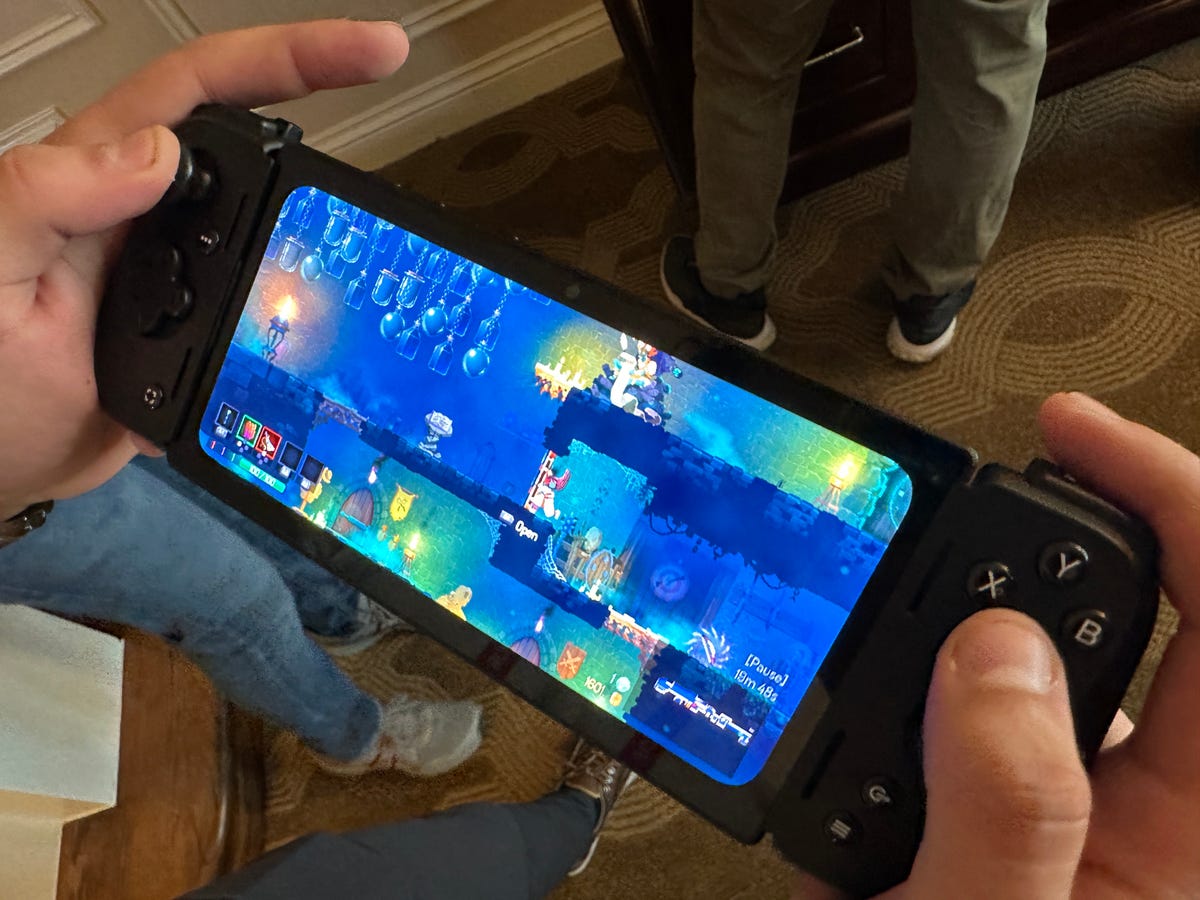Nearly a decade ago, Razer’s convertible gaming tablet, the Razer Edge, was the favorite thing I saw at CES. I’m back at CES in Las Vegas, and once again, I’ve been trying out the new Razer Edge, reborn again. This time, it’s a compact 6.8-inch tablet handheld console arriving Jan. 26, for $400 (there’s also a Verizon-exclusive 5G-equipped model).
The new Edge, long teased by Razer in various forms since Qualcomm and Razer first showed off a handheld concept a year ago using a new gaming-centric G3X Gen 1 mobile processor, isn’t a wild new idea like the first Edge was to me. It’s the latest in a trend of game handhelds adopting ideas in the spirit of the Nintendo Switch, bringing handheld gaming back in new forms. The Edge isn’t a Steam Deck-alike: This is an Android tablet, more like a large 6.8-inch phone that’s not a phone. It has a similar feel to smaller tablets, like the Nvidia Shield Tablet, but far slimmer.
At first, it’s…well, underwhelming. I’ve seen Razer’s Kishi snap-on game controllers for phones, and the Edge has the same concept. It uses an improved version of the Kishi design with support for vibrating haptics, which I didn’t get to experience. The tablet part, well, it’s a tablet, like many Android things. The combination of parts could add up to more, though. The vivid, lovely large 6.8-inch AMOLED display does look great, and the new G3X chipset on this tablet could be better at handling streaming games. Razer’s boasting that it’ll be the ultimate way to try Xbox cloud gaming or playing games via Steam Link, although I also didn’t try that yet either.


A closer look at the buttons and the top shoulder buttons/triggers.
James Martin/CNETBut the specs are nice: It has a 2,400×1,080-pixel resolution display that runs at up to 144Hz, and the G3X processor promises active cooling to prolong game sessions. The 128GB of storage can be bumped to 2TB with a MicroSD card slot. The Kishi V2 Pro controller it comes with, which is removable, adds vibrating haptics the other models didn’t have before. Using Google Play plus existing streaming game services and Razer’s already-working Nexus app for captures and gameplay streaming. Its advantage, to me, is that it’s not starting over: it’s leaning on what already works, aiming to do it better.


The Edge detaches from its controller, and could just be used as a small Android tablet.
James Martin/CNETThe few games I did play were locally stored games such as Dead Cells, an older 2D platformer. The Edge is wide and a bit long, but compared to a Nintendo Switch or a Steam Deck, it wouldn’t seem out of place.
With something like the Edge, it all depends on how good it is at what it does. I can’t quite tell that yet. $400 isn’t a bad price, and is at least totally competitive with the cost of a Switch or Steam Deck. But would you want this over one of those? Or, would you just be happier using your phone and a similar controller? The Edge’s advantages seem intriguing, and I’m curious to play it more. Luckily, Jan. 26 is just a few weeks away, but with 2023 already looking to be a busy year for tech hardware releases, you also might want to wait to see what else is coming next.


The Razer Edge feels compact enough, and its display looks great.
Scott Stein/CNET
